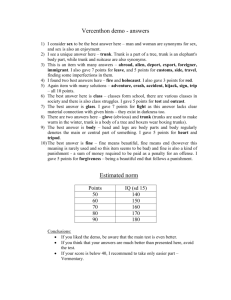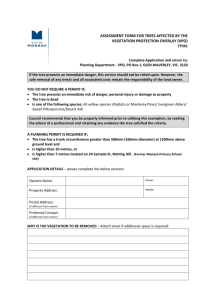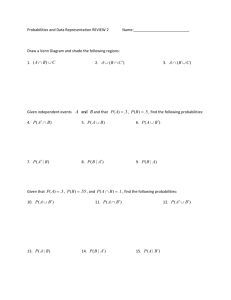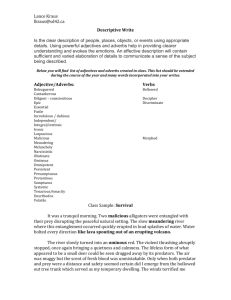Teacher`s Manual - Civil War Trust
advertisement
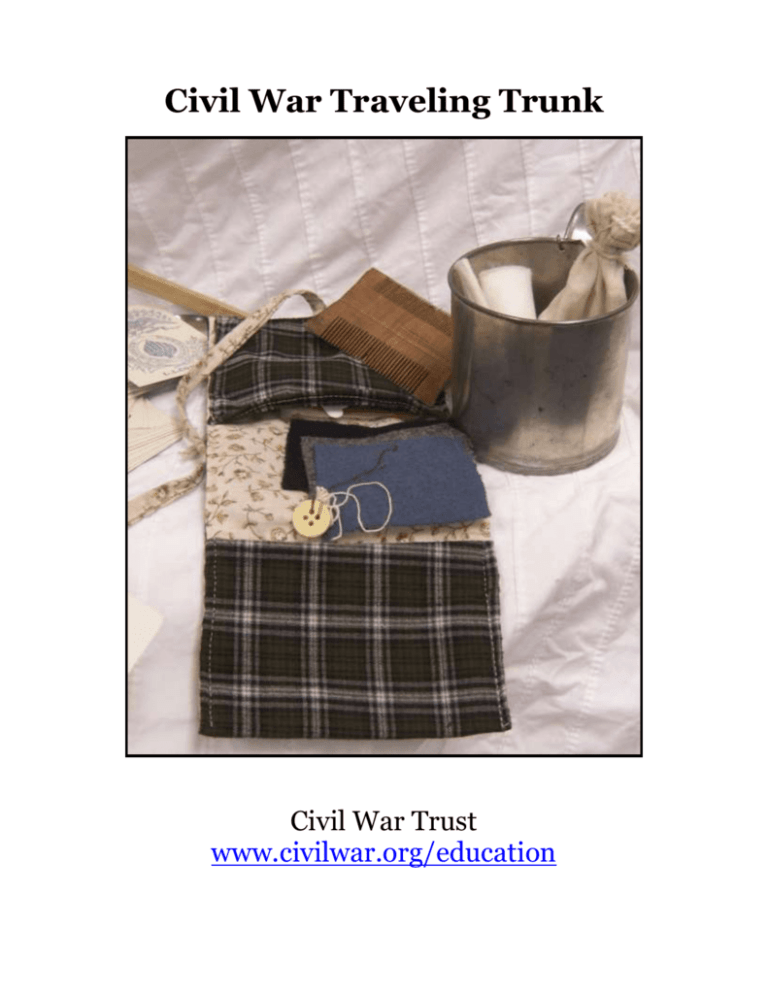
Civil War Traveling Trunk Civil War Trust www.civilwar.org/education How to – The Traveling Trunk Thank you for borrowing the Civil War Traveling Trunk, we are very excited to be able to offer this wonderful resource free to teachers. Here are some helpful guidelines for using the trunk: 1. Inventory – upon renting the trunk the Trust sent you an e-mail with the inventory list attached. When you receive the trunk take an inventory and when you are done for the week take another inventory. E-mail the inventory at the end of the week to education@civilwar.org. 2. Be Careful – we fully expect the materials to be used and handled; however, this trunk needs to go around the country all year, so we want to be sure the next class has a great experience as well. (For the paper documents, such as enlistment papers, make copies of the documents we included, then the students can write on the copies) 3. Have Fun – the items in the trunk can be categorized and placed into stations, used for plays, used for scavenger hunts, and used in conjunction with our online lesson plans; however, there are no rules and you are welcome to use the objects as you see fit. Resources can be found on www.civilwar.org/education/teachers/travelingtrunk.html. 4. Take Pictures – send us pictures of students utilizing the trunk. Pictures provide evidence of programs that work, thus allowing us to promote the program and acquire further funding to create more resources for teachers and students. 5. Evaluate – go online and fill out the evaluation using the link the Trust sent you when you rented the trunk. We need this to make sure that the trunks remain relevant in today’s classroom. 6. Pass it Along – be sure to send the trunk to the next person at the end of your week! The packing slip will be e-mailed to you by the Trust before your week is through. Contact: Sam Smith Education Coordinator Civil War Trust travelingtrunk@civilwar.org 202-367-1861 x7223 The Trunk & the Curriculum: The Civil War Curriculum Alignment to the Traveling Trunk Objects Item Clothing Dress Bonnet Union Jacket Confederate Jacket Union Kepi Confederate Kepi Shoes Artifacts and Replicas Canteen with Plate Attachment Reproduction Bullets Actual Canister Shot Canister Model Cotton Bolls Hardtack Fife Fan Full size Bonnie Blue Flag Small Flag Set Union Money Confederate Money Carte de Visite Jacob’s Ladder Haversack Toothbrush Two-piece Silverware Set Tin Cup Housewife with Cloth, Buttons, Thread Comb Playing cards Coffee Ration Prayer Book Christian Commission Identifier Tag Posters The Cartoon History of the Civil War and Guide Young Soldiers and Guide Books and Pamphlets American Children’s Games through the Civil War Period The American Spelling Book Baxter’s Volunteer Manual Goal 5 5 4 4 4 4 4 4 4 4 4 1 4 4 1,5 2,4 2,4 1,4 2,4 4 5 4 4 4 4,5 4 4 4 4 4 2-7 4 5 1,5 4 Beadle’s Dime Book of Practical Etiquette Civil War Kids 150 Cooking for the Cause Everyday Life: The Civil War Uniforms of Billy Yank Uniforms of Johnny Reb Private Soldiers and Public Heroes Remembering Slavery Smoke Not The Civil War Curriculum An Introduction to Small Arms of the Civil War Gettysburg Then and Now The Civil War Collection Boxed Set Map of Antietam CD’s and DVD’s Remembering Slavery Audio CD (might be in back of book) Glory Dulcem Melodies: The 2nd South Carolina String Band The Songs of the Civil War: Irwin Silber Manassas Documents Union Documents Confederate Documents Worksheets, Lesson Plans, Activities Fife Guide and Fingering Chart Music Lesson Plan 3-D Lesson Plans and glasses Clothing Worksheet Accoutrements Worksheet Letters Determining the Main Idea Canister Guide Weeping, Sad, and Lonely Flag Guide Language of the 19th Century Etiquette Book Teacher Packet Manual Photo Release Form 5 All 5 4 4 4 4 1 4,5 All 4 6,9 All 3 1,3 3-7 All All 2 All All 4 4 3,4,5 4,5 4,5 4,5 4,5 All 4 5 4 n/a n/a Civil War Trust Saving America’s Civil War Battlefields Our Mission The Civil War Trust’s mission is to preserve America’s significant Civil War battlefields by protecting the land and educating the public about the vital roles those battlefields played in directing the course of our nation’s history. Destroyed Battlefields Only 20% of Civil War battlefield land is currently preserved by non-profit groups, such as the Trust, or in national, state, or local parks. Most of the land that has not been preserved is owned by private landowners. This land can be sold to a developer or rezoned for government development at any time. This land is lost at an approximate rate of one acre every hour. A study done by Congress shows that 20% of this land has already been destroyed by housing developments, covered by roads, and other inappropriate development. It is important to preserve Civil War battlefields in order to preserve our history, create valuable open space, and create “urban parks” of the future. Preservation Method The Civil War Trust preserves land utilizing several well established conservation strategies. Ultimately, these efforts are guided by our mission to preserve significant battlefield land in perpetuity. For those interested in preserving a property we invite you to contact our real estate department directly. We work only with willing sellers and each project is unique in its own way. However, in general, there are two types of preservation transactions: 1. Preservation in which the landowner retains ownership ( i.e. Conservation Easements ) 2. Preservation that transfers ownership ( i.e. “Fee simple transactions” ) In order to determine what to buy and what preservation strategy best suits the project we first consult with a landmark study in the world of battlefield preservation, the Civil War Sites Advisory Commission Report (“CWSAC”). The CWSAC Report was completed in 1993 by a 15-member Commission established by Congress to identify the most historically significant Civil War sites. Out of the nearly 10,000 battles and skirmishes of the war the report, which is in the process of being updated, identified 384 principle battlefields worthy of preservation. Once the Trust’s determines whether a prospective property is listed as a CWSAC eligible site, we utilize our Geographic Information System (“GIS”) computerized mapping capabilities to locate the potential property in relation to the historic landscape.

